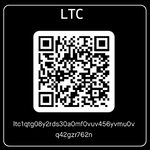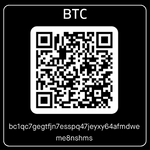The Network State - Balaji Srinivasan, July 4, 2022
5.3.12 What Technological Developments enable Network States?
Here are some of the key enablers of the network state:
1. The Internet is to the USA as the Americas were to the UK. Of course, the internet enables the whole thing.
But the manner in which it enables the network state is worth discussing. Think of the internet as a cloud continent, a sort of digital Atlantis that came down from the heavens sometime around 1991 and has parked itself over the middle of the Pacific Ocean. Every day, everyone who spends (say) 8 hours online is doing the equivalent of flying up to this cloud from Menlo Park or Tokyo for business or pleasure, and then flying back down. While there, they see new things, meet new people, and sometimes fight them. So far, what we’ve described is much like the settling of the Americas from 1492-1890, but there are at least two key differences. First, of course, the cloud had no pre-existing people. Second, unlike the vast-but-finite soil of America, you can create new digital land ad infinitum in the cloud. As we discuss later on, that reopening of the frontier changes everything. It means that the Internet is to the USA as the Americas were to the UK: a wide open territory that ultimately gave birth to new states and ways of thinking.
2. Bitcoin constrains legacy states. Bitcoin is the next most important prerequisite for the network state. As a government of governments, it guarantees the sovereignty of both the individual citizen and the network state itself. Neither can have their funds stolen by each other, or by a hostile third party. Bitcoin has also created new fortunes outside the fiat system, demonstrated that institutions as powerful as the Fed can be replaced in a few decades, and pioneered an entirely new way of designing web services in a decentralized manner. 3. Web3 enables new chains, decentralized identities, and censorship-resistant communities. With web3, we can set up a blockchain as the backbone of each network state. This is the community chain that the state-appointed leadership has root over, as a complement to a public chain like Bitcoin or Ethereum that serves as an external check and balance. We can create decentralized identities similar to ENS and SNS to serve as digital passports for the network state, defining citizenship on the basis of single sign-on access to network state services. And we can allow not just censorship-resistant communication, but censorship-resistant communities, voluntary gatherings of people that can exist outside the interference or surveillance of legacy states.
4. Remote and Starlink open up the map. The moment something is put on the internet, it becomes remote friendly. And everything is going on the internet. Moreover, remote doesn’t just mean around the corner, it means around the world. Starlink, and satellite broadband more generally, powers up remote further, by making huge swaths of the map newly economically feasible. Nothing now prevents a sufficiently motivated digital community from setting up their own Burning Man equivalent in the middle of nowhere, except this time for permanent habitation, and with an eye towards incorporating formal towns and and cities. This complements our earlier point: through the internet, we’re reopening the frontier, and making previously godforsaken areas of the map much more attractive. Unlike past eras, you don’t no longer need to be near a port or mine to build a city; you just need to be near an internet connection.
5. Mobile makes us more mobile. Law is a function of latitude and longitude, so if you can easily change your latitude and longitude, you can change the law under which you live. That’s why the most important long-term consequence of the smartphone is Tiebout sorting. That is, all of the assumptions in Charles Tiebout’s famous paper from the 50s become feasible with sufficiently 258 CHAPTER 5. FROM NATION STATES TO NETWORK STATES advanced phones. With digital nomad search engines like ‘teleport.org‘ and ‘nomadlist.com‘, some people can choose who they want, while others move where they like.
6. VR builds a capital in the cloud, AR mirrors it on the land. Virtual reality (and more generally the open metaverse) are yet another way in which the obligate ties to the land are being cut. We can now build full castles in the sky, and then with augmented reality project them onto the earth. For a network archipelago or network state, that’s a powerful way to link distributed physical territories together into a coherent whole.
7. Social disintermediated the media. Again, this one is almost too obvious, but social media allowed anyone to build a massive following online, it disintermediated the legacy media, and (in combination with messaging apps and related tools) it made one’s contacts infinitely pportable.
8. GAFAM showed us what’s possible, startup/VC showed us how. None of the web3 world would be possible without the web2 and web1 worlds. Google showed us what could be done from a garage. Facebook showed us what could be built from a dorm room. The entire startup industry has shown us that big things can be done on a shoestring. Without the trillion dollar companies and billion user networks, we wouldn’t feel like we could build million person network states. In particular, as Gilles Babinet observed, once you see partial transfers of sovereignty in the digital world, you know more may come. From the postal service to Gmail, from taxi medallions to Uber and Lyft, from the banks to Bitcoin, from the maps to Google Maps, from the FCC to WhatsApp, from the courts to moderators, legacy states control less and digital networks control more. Of course, the former lack technical competence and the latter lack democratic legitimacy, which is exactly the problem the network state solves.
Next, here are a few things that will be helpful to network states, but are not essential for their construction:
1. Land becomes elastic. As Will Rogers once said, “buy land, they ain’t making any more of it.” Or are they? Seasteaders and the artificial islands built in Dubai show that land supply is perhaps more elastic than we think. We also know you can build cruise ships. So it’s possible that we could start reopening the frontier physically as well, not just digitally. This isn’t incompatible with Georgism, which argues that the inelastic supply of land means there should be only one tax, a land tax; it just means the supply is not perfectly inelastic. If you combine the two concepts, if more value creation goes online and away from the physical world, you get the idea of being able to (a) print more land, and (b) partially commoditize existing nation states as providers of land and natural resources.
2. Telepresence changes the nature of immigration. The next step after simply projecting in an AR avatar is to dial up a robot on the other side of the world and start walking around. This should in theory be feasible by combining (a) Boston Dynamics’ legged robots, (b) DoubleRobotics’ telepresent iPads on wheels, (c) an Oculus Quest headset, and (d) an omnidirectional treadmill. That combination of devices could furnish immersive control of a humanoid robot anywhere on the globe.
3. Bits reopen innovation in atoms. Innovation in areas like biomedicine, robotics, and energy is not upstream of the network state, it’s downstream of it. The network state solves the problem posed by Thiel, Cowen, and J Storrs Hall. We’re using bits to reopen innovation in atoms, because innovation in atoms has been blocked by regulations, which are in turn created by the US establishment and exported all over the world through harmonization. The network state uses digital technology to gain sufficient consent in the cloud to build a community, crowdfund territory, and eventually gain recognition as a sovereign polity. Once we do so, we can return innovation to the physical world. The nation state was enabled by maps of the world, tools to communicate laws, and the guns to enforce them. The network state is enabled by the creation of a new world (the internet), the software to code and communicate policies, and the cryptography to enforce them,





